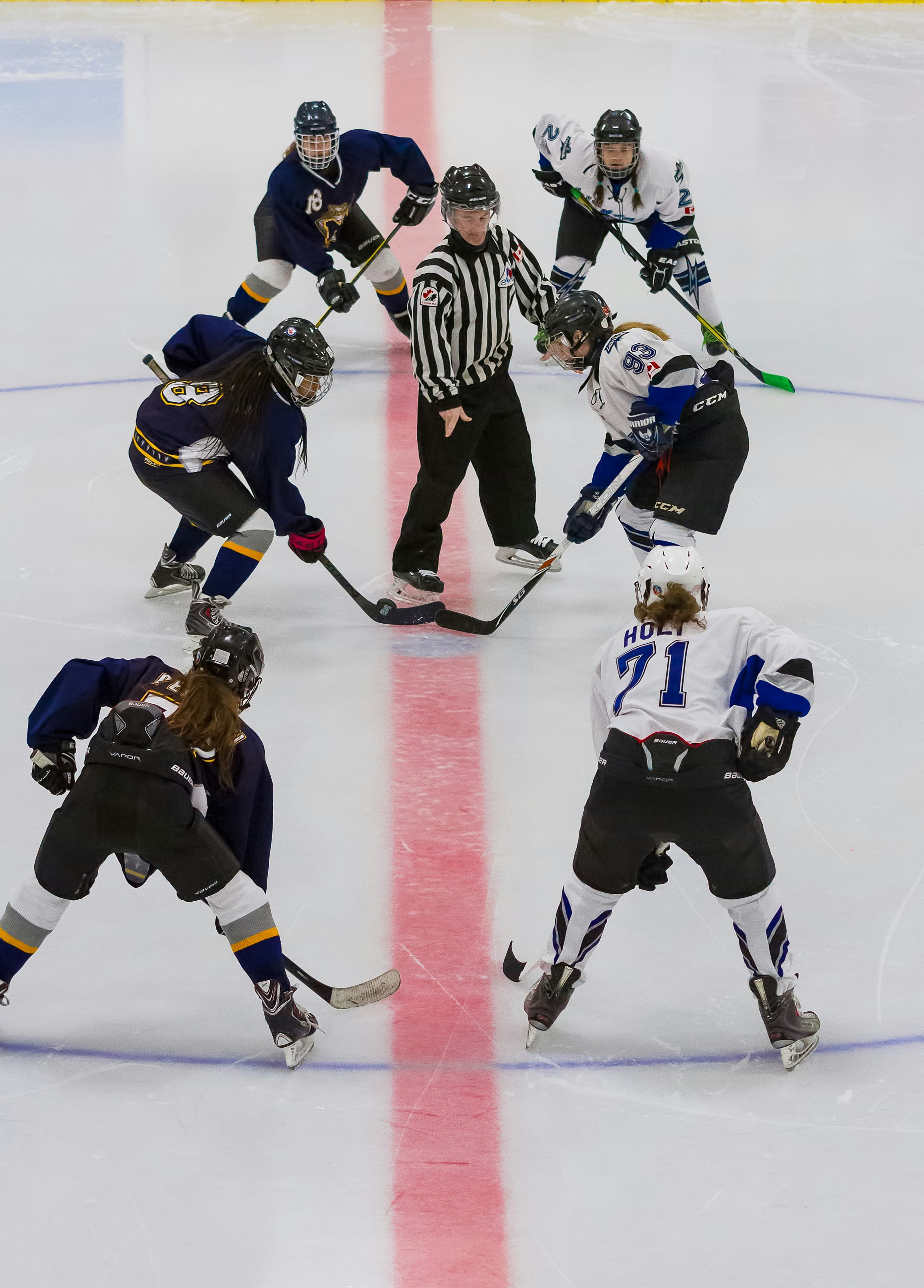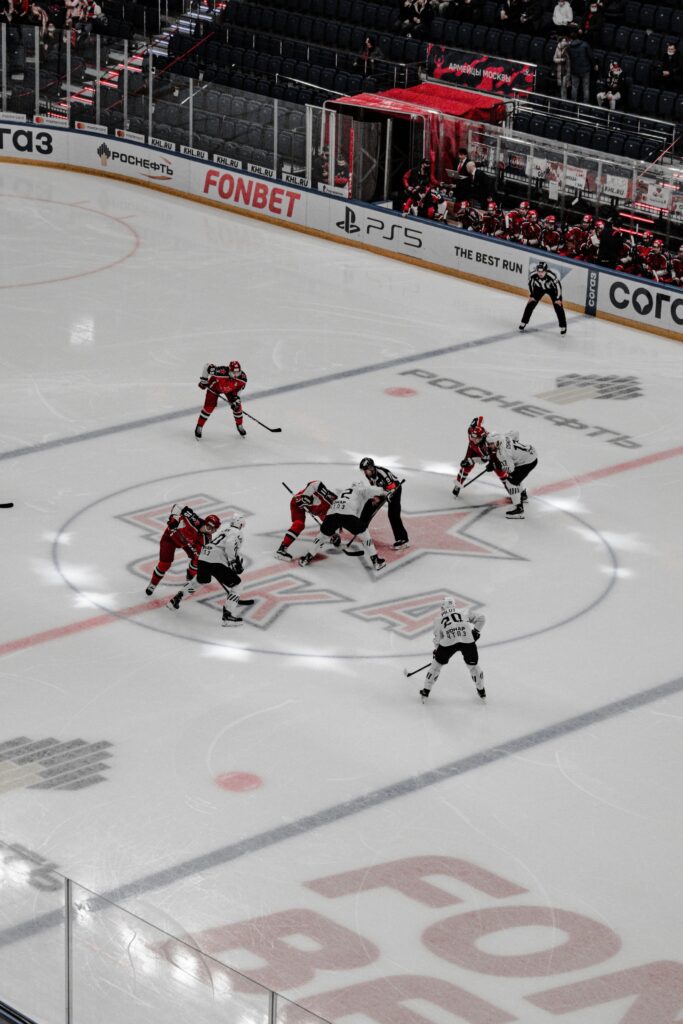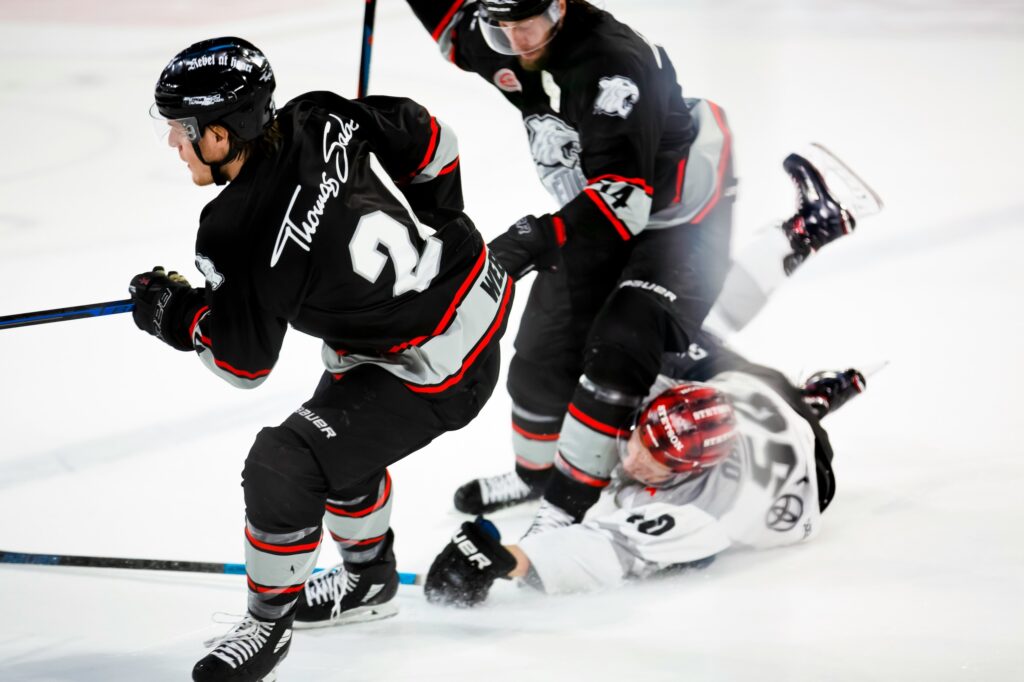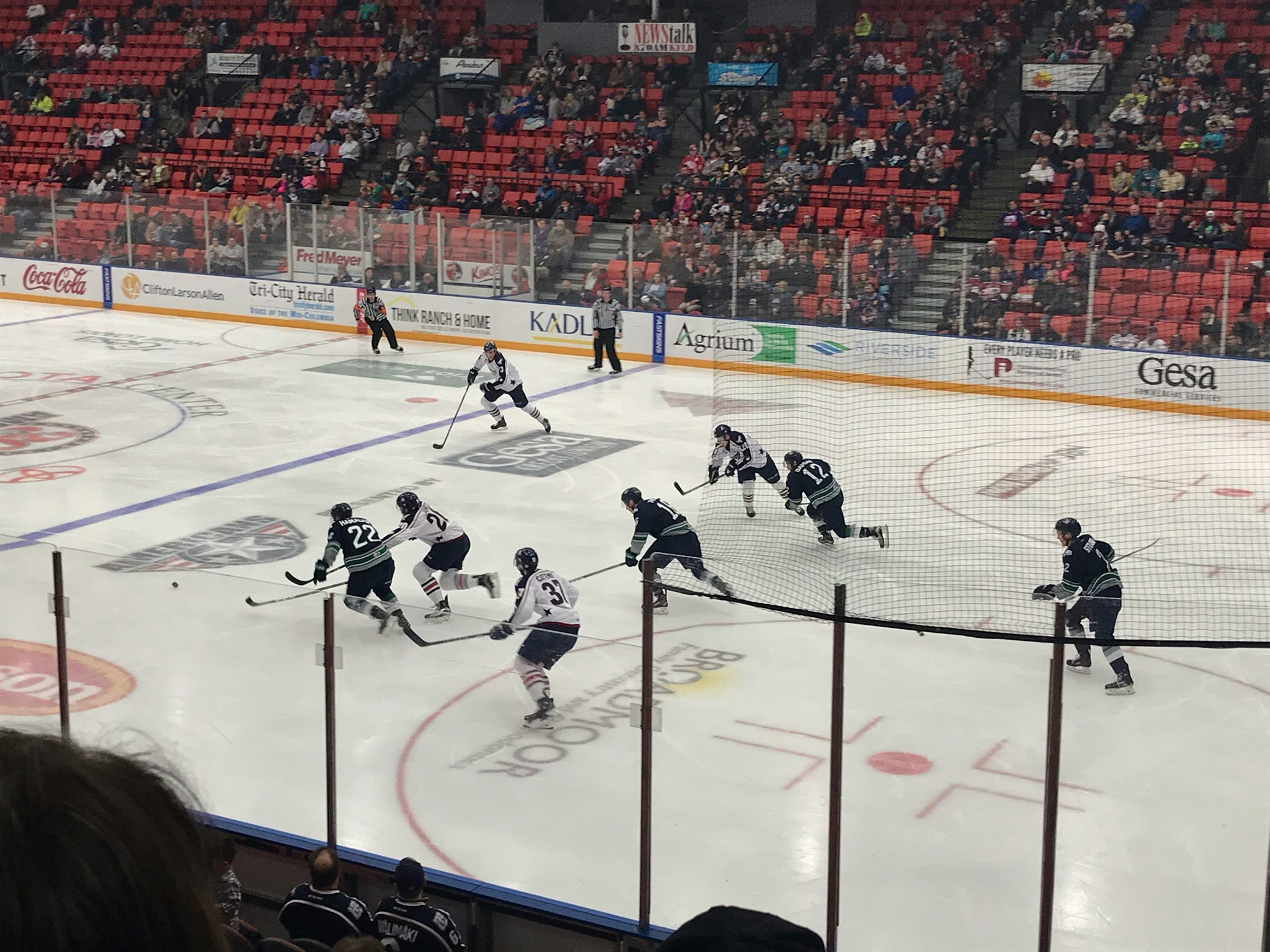Ice hockey is one of the most thrilling and fast-paced winter sports. With its high-speed action, physical intensity, and complex strategy, ice hockey captivates millions of fans worldwide. But for those new to the sport, the rules can seem overwhelming.
This guide explains the basic rules of ice hockey. It covers the game’s structure and how to play. This makes it easy for anyone to understand and enjoy.
- The Rink: Where the Game Takes Place
- Players and Positions in Ice Hockey
- Basic Rules of Ice Hockey
- Penalties: Keeping the Game Fair
- Power Plays and Penalty Kills
- How to Score in Ice Hockey
- Overtime and Shootouts
- Key Skills and Tactics in Ice Hockey
- FAQs about Ice Hockey
The Rink: Where the Game Takes Place
Ice hockey is played on a standard rink, divided into three main sections:
- Defensive Zone: The area in front of your team’s goalie.
- Neutral Zone: The middle section of the rink, where face-offs often happen.
- Offensive Zone: The area in front of the opposing team’s goal.
The rink also features five face-off circles and goals at each end.
Players and Positions in Ice Hockey
Each team consists of six players on the ice at one time:
1. Goaltender (Goalie): Protects the goal and tries to prevent the puck from entering.
2. Defensemen (2): Positioned at the blue line, their job is to block shots and support the goalie in defense.
3. Forwards (3): Includes a center and two wingers. Forwards focus on offense, trying to score goals while also defending against opposing attacks.
Basic Rules of Ice Hockey

Now that we know where the game takes place and who plays on the ice, let’s examine some key rules of ice hockey.
1. Game Structure
An ice hockey game consists of three periods, each lasting 20 minutes, with two 15-minute intermissions. If the game ties after the third period, the teams play overtime, and in some cases, a shootout will determine the winner.
2. Face-Offs
Face-offs are used to start play. The referee drops the puck between two players, one from each team, at one of the five face-off circles. Players conduct face-offs after a goal, at the start of each period, or to restart the game after stoppages.
3. Offside and Icing
Offside: A player cannot enter the offensive zone before the puck crosses the blue line.
Icing: A player is called for icing if they shoot the puck past the center red line. The puck must cross the other team’s goal line without anyone touching it. This results in a face-off in the defending zone.
Penalties: Keeping the Game Fair
In ice hockey, referees give penalties when players break the rules. Penalties cause the player to go to the penalty box. This leaves their team shorthanded for a set time. Common penalties include:
- Minor Penalties (2 minutes): For infractions like tripping, slashing, or hooking.
- Major Penalties (5 minutes): Usually for fighting or more serious offenses.
- Misconduct Penalties: Can last 10 minutes, often for unsportsmanlike behavior.
When a team loses a player because of a penalty, the other team gets a power play because they now have one extra player on the ice. This gives them an advantage until the penalty is over.
Power Plays and Penalty Kills
When a team gets a power play because of a penalty on the other team, they have an advantage. They have more players on the ice.
Power plays are often critical moments in a game, providing a prime opportunity to score. When the opposing team is down a player, they will focus on penalty killing. Their goal is to survive the power play without giving up a goal.

How to Score in Ice Hockey
The main objective of ice hockey is simple. Score more goals than the opposing team. A player scores a goal when the puck crosses the goal line, goes past the goalie, and enters the net. Goals can be scored through various means:
- Slap Shot: A powerful shot using a full wind-up motion.
- Wrist Shot: A quicker shot relying on precision and accuracy.
- Deflections: When a puck is redirected into the net by a teammate or even an opponent.
Teams use complex offensive strategies against their opponents and create scoring opportunities.
Overtime and Shootouts
If a game ties at the end of the third period, the teams go into overtime. Overtime usually has three skaters on each team in the NHL. If no one scores in overtime, the game goes to a shootout.
In the shootout, three players from each team take turns. They try to score against the other team’s goalie in a one-on-one situation.
Key Skills and Tactics in Ice Hockey
- Skating is arguably the most critical skill in ice hockey. Players must be able to skate forward and backward quickly, stop on a dime, and maneuver smoothly across the ice.
- Passing is essential to keep the puck moving and create scoring chances. Teams use various passing techniques, from short quick passes to long cross-ice passes, to outmaneuver opponents.
- Checking is a defensive move where a player uses their body to block or slow down an opposing player. Body checking is allowed but must be done legally to avoid penalties.

Ice hockey is a dynamic sport that requires a combination of physical skill, strategic thinking, and teamwork. Knowing the rules of ice hockey, like penalties, power plays, face-offs, and offside calls, helps fans enjoy the game more. Whether you are in the stands or on the ice for the first time, these basic rules will help you. They will make it easier for you to understand and enjoy Canada’s favorite winter sport.
Frequently Asked Questions (FAQs) about Ice Hockey
What are the 5 basic rules of hockey?
- Offside: Players cannot enter the offensive zone before the puck.
- Icing: Shooting the puck from behind the center red line, past the opposing goal line, without it being touched.
- Face-Offs: Used to restart play after stoppages.
- Penalties: Players breaking the rules sit in the penalty box, giving the opposing team a power play.
- Goal Scoring: The puck must fully cross the goal line to count as a goal.
What are 5 facts about hockey?
- Hockey is Canada’s national winter sport.
- The Stanley Cup is the oldest professional sports trophy in North America.
- A standard NHL game lasts 60 minutes, divided into three 20-minute periods.
- Wayne Gretzky holds the record for most career points in NHL history. He famously wore the number 99 during his legendary NHL career. In recognition of his achievements, the NHL retired his number league-wide in 2000.
- Ice hockey originated in Canada in the 19th century.
What do you need to know to play hockey?
- Master skating, as it’s the foundation of all movement in the game.
- Understand the positions: goalie, defensemen, and forwards.
- Learn basic puck-handling skills like passing, shooting, and checking.
- Know the game’s structure: three periods, face-offs, and penalties.
- Practice teamwork and communication with your teammates.
What is the Gretzky rule in hockey?
- The Gretzky Rule refers to a rule implemented in the NHL during the 1985–86 season, limiting how many points a player could be on the ice for in any single power play. This was due to Wayne Gretzky’s dominance, as he scored multiple points during power plays. The rule was later repealed.
What is the golden rule in hockey?
- The “golden rule” in hockey often refers to sportsmanship, where players should treat each other with respect on and off the ice.
What is Rule 620 in NHL?
- Rule 620 covers “Icing the Puck,” which is when a player shoots the puck from behind the center red line across the opposing goal line without it being touched, resulting in a stoppage and a face-off in the offending team’s zone.
What is the golden goal rule in hockey?
- The “Golden Goal” rule refers to a goal scored in overtime that immediately ends the game. It was famously used in Olympic hockey, including Sidney Crosby’s winning goal for Canada in the 2010 Winter Olympics.





